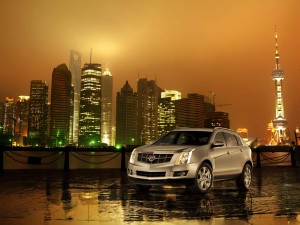For the first time ever, China has become General Motors’ single-largest national market, sales for the first half of the year in the booming Asian economy surpassing those in GM’s home U.S. market.
With the carmaker’s Chinese sales expected to reach 2 million this year, and 3 million by 2015 – the gap seems likely to continue widening, GM indicates.
For the first six months of 2010, Chinese buyers snapped up 1.21 million GM vehicles, which are sold in that country under the Buick, Chevrolet and other brand badges. By comparison, volume totaled just 1.08 million, even though June marked the sixth month in a row of sales growth for the maker’s U.S. core brands.
GM officials confirmed this is the first time one of the company’s foreign operations has “consistently” outperformed the U.S. in the automaker’s 102-year history.
And considering the harsh criticism GM and its management have faced in the wake of the company’s 2009 bankruptcy, China’s strong performance comes as a bit of vindication. Former Chairman and CEO John Smith took tremendous heat, in the late 1990s, when he first announced plans to set up a manufacturing operation in what was then little more than a backwater automotive market.
Ironically, company officials openly credit the success of those operations with saving the Buick brand, one of just four nameplates that were carried over in the U.S. market after GM emerged from Chapter 11, last year. With Buick in a bitter battle with Volkswagen for dominance in China, GM officials felt they could not kill off the brand back home without hurting its global image. Going forward, GM’s Shanghai-based engineering and design center, PATEC, is expected to play a leading role in the development of future Buick products.
The Chinese market, on the whole, is one of the bright spots in an otherwise troubled auto industry. Since GM entered the market, industry sales have, at times, soared by triple-digits. Last year, overall demand rose “only” 46%, in part propped up by government incentives.
With current sales trends suggesting a more modest 17% growth rate, according to market researchers J.D. Power and Associates, the Beijing government has extended the Chinese equivalent of last year’s U.S. Cash-for-Clunkers program, which encourages motorists to trade old cars in for new.
The Chinese market has surged past the U.S. for two years now and, according to Power, sales should come in at around 15.2 million vehicles for all of 2010, well ahead of the research firm’s U.S. forecast of 11.8 million.
GM sales have been outpacing the overall Chinese market. During the first quarter alone they jumped 71%. For the full year, the automaker predicts it will sell a record 2 million cars there – about 4 years ahead of when it had previously expected to hit that mark. And the revised forecast now projects GM China will top 3 million by 2015.
“We already have an incredible focus on China and we’re going to put as much energy as we can on China,” said Kevin Wale, president and managing director for GM China Group.
That optimistic forecast has to reckon with the increasingly competitive nature of the Chinese market, where new entrants and new joint ventures are adding to a steadily growing list of products competing for consumers’ attention.
As with all foreign makers, GM operates in China through a series of joint ventures with local manufacturers. These include two with Shanghai-based SAIC, as well as a third, producing the Wuling-branded microvan, that teams GM up with SAIC and Wuling Automotive. It imports a small number of Western-made products, though demand is held low due to hefty tariffs on imported vehicles.
In the strange bedfellow world of Chinese auto manufacturing, SAIC also partners with Volkswagen – and has begun expanding its own line-up of vehicles.
In just the last two years, GM’s various ventures have introduced 14 new models, but Wale recently revealed plans to launch 25 more new or revised vehicles by the end of 2011, including the Chevrolet Volt, an extended-range electric vehicle.
To meet its sales targets, the Detroit-based maker will need to find more production, and some observers are speculating it could be forced to add yet another Buick plant. While Wale declines to say how it will get there, he recently did acknowledge, “It’s just mathematics,” adding that, “If we’re going to increase our sales to 2 million, we have to expand capacity.”

